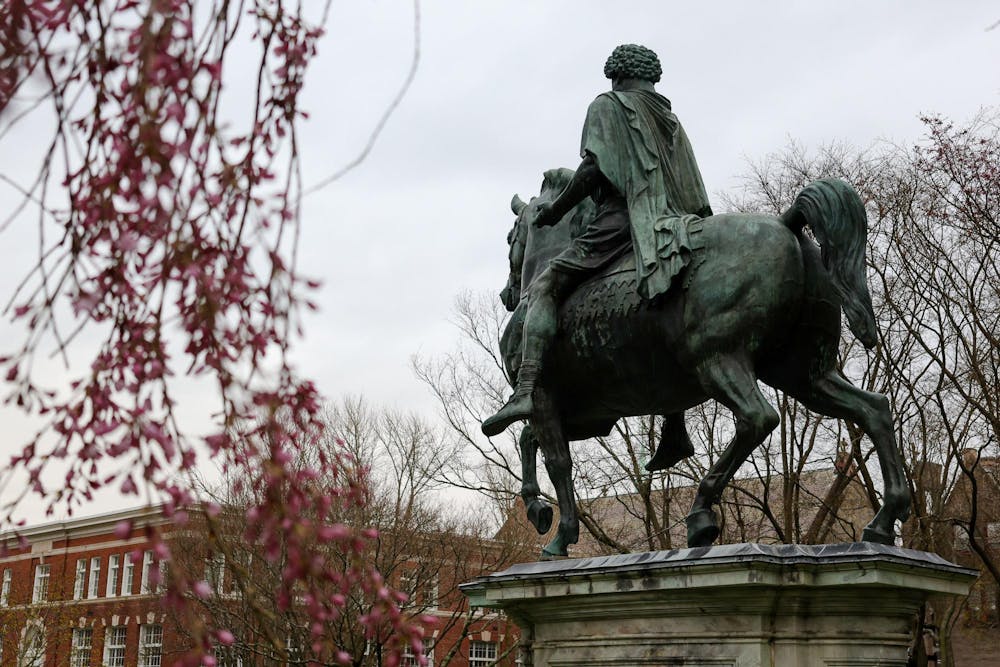Imagine a bandit breaks into your house. He terrorizes your family, eats your food and then refuses to leave. When you attempt to force him out, he enlists help from the local government, which evicts you instead. Left without your home and most prized possessions, you fall into poverty. Meanwhile, the intruder prospers: Your home appreciates, and your stolen possessions are sold for profit.
Generations later, the bandit’s descendants start to feel guilty. They publicly acknowledge that your family was left destitute (though their version of the story doesn’t perfectly match yours) and declare that something ought to be done. Yet even as they speak, the wealth they inherited — wealth taken from you — continues to grow.
This is the dynamic behind land acknowledgements. Though well-intended, they oversimplify history and do nothing to resolve the real issues currently facing Indigenous people. Instead, they simply make those delivering them and their audiences feel morally absolved.
Some argue that land acknowledgements at universities are a way to show respect for the Indigenous peoples who originally lived on the land. But at Brown (and most other universities), these statements fall short of this goal because there are rarely any Indigenous people present to witness or benefit from them. In fact, the very institutions that perform these acknowledgements bear some responsibility for this absence, having displaced and disadvantaged many of the Indigenous peoples who laid original claim to the land we now call our campus.
In theory, these land acknowledgments can at least help educate non-Indigenous people about the history of the land. Yet, in practice, this is rarely the case. Many are incomplete or inaccurate and promote misunderstandings of history. For example, as noted by Michael Lambert, Valerie Lambert and Elisa J. Sobo — three anthropologists, two of whom are Indigenous — land acknowledgements often name the tribe that previously lived where the event is happening by characterizing them as “stewards” of their “ancestral homeland.” These statements depict these tribes as ancient historical groups, even though many still exist and suffer from the consequences of past displacement.
Even if all land acknowledgements were historically accurate, they would still be empty gestures. Most are delivered superficially, and are followed by a quick shift to the day’s agenda — which is almost always unrelated to the acknowledgement. Furthermore, no amount of land acknowledgements — even if they were given before every lecture, test, study session or office hours — would actually change the material conditions of Indigenous Americans in the United States.
Land acknowledgements are thus reduced to symbolic gestures used to make both the reader and the listeners feel like they have done a good deed without needing to take any further action. This becomes clear when further examining the language used in many acknowledgements — take, for example, Brown’s land acknowledgement. It declares that the University and its community must “commit to working together to honor our past and build our future with truth.” While this is a noble statement, it does not explain how a listener can fulfill these duties. As a result, students are left with a feel-good moment that demands nothing further while continuing to benefit from a University that built on important Indigenous land.
Still, it must be noted that Brown’s land acknowledgement is significantly more substantial than those at other universities. For example, the one from the University of Illinois, a public, land-grant university in my home state, only provides a cursory link to donate to the university’s Native American house, with little additional context or guidance. In contrast, Brown’s land acknowledgement is accompanied by an explanation of the concrete actions the University has worked to rectify past injustices and shares an extensive range of resources about Indigenous American history. The statement was also developed in consultation with the Narragansett Indian Tribe and Indigenous scholars to ensure its accuracy.
That said, these resources live online, disconnected from the spoken acknowledgements delivered before events or classes — meaning most listeners won’t know to explore them further. And while Brown outlines the actions it has taken, it offers little direction for individuals to get involved themselves. In that sense, the acknowledgement may function as a kind of moral outsourcing, where the presence of institutional action lets listeners off the hook, allowing them to feel that the work has already been done on their behalf.
To go beyond the moral exhibitionism of land acknowledgements, we should instead take direct action to support and truly help Indigenous people. Rather than delivering toothless statements, individuals should donate money to national charities like the Native American Rights Fund, lobby their representatives to take action on issues affecting Indigenous Americans or support Native-owned businesses, to list a few options.
Ultimately, we must ask: Is a bandit who steals and remembers, but does little to truly make amends really any better than one who steals and simply forgets? Either way, the house and its contents have been appropriated, and someone else is still living in it.
Ben Aizenberg can be reached at benjamin_aizenberg@brown.edu. Please send responses to this op-ed to letters@browndailyherald.com and other op-eds to opinions@browndailyherald.com.





